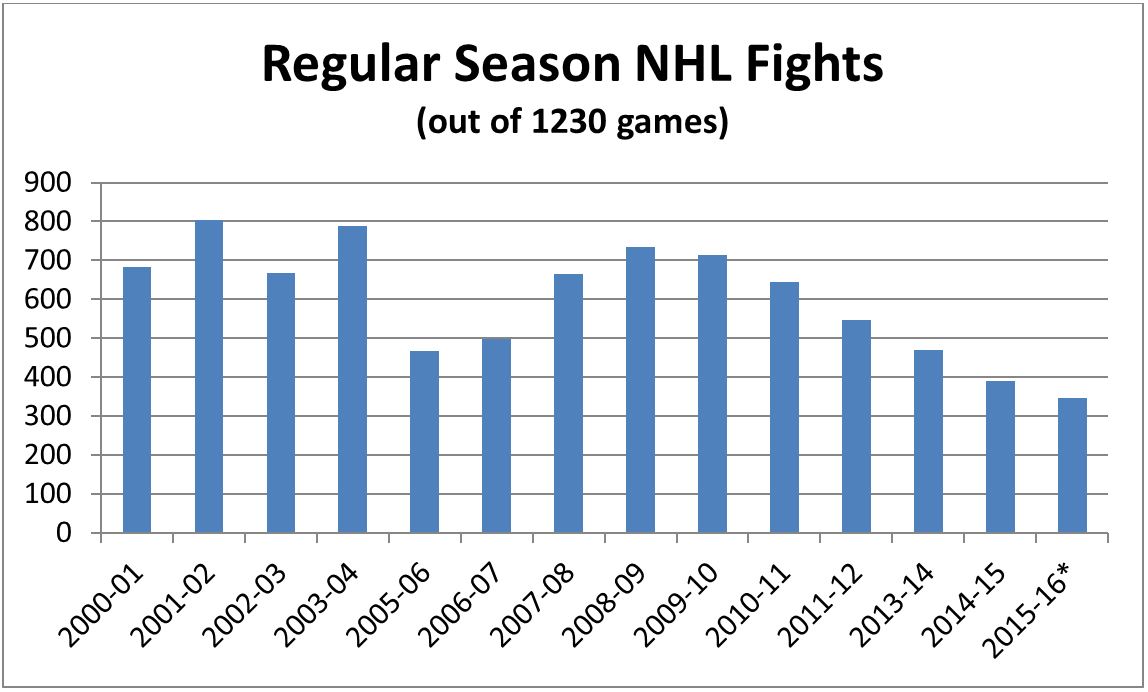The number of fights in the NHL is declining, and Detriot Red Wings forward Justin Abdelakder claims it’s due to the players’ head injury awareness. He could very well be right.
According to Hockeyfights.com, based on the number of fights per game this season so far, the NHL is on track to have 347 fights by the time the regular season closes. That’s less than half of the 734 fights in the 2008-09 season, and there’s a clear overall decline in the number of fights since 2000.
*Projected based on current data
**2012-13 season excluded due to abbreviated schedule. There were 347 fights in 720 games.
It makes sense that this trend could be because players are more aware of the costs of pummeling each other’s heads.
Hockey will probably always have fights; they’re one of things fans love about it. But the players know now how destructive blows to the brain can be, and the numbers reflect that awareness. The players are taking the threat seriously, and it’s encouraging to see.
*Scientists have no conclusive evidence as to whether or how the reduction of g-forces during impacts reduces the number or degree of concussions and head injuries. GelDefender products provide supplemental padding as well as cooling and comfort benefits when used with helmets and caps. Participants in activities in which head impacts can occur should always use tested and approved helmets for protection. However, no helmet or supplemental padding can protect the user from all serious head or neck injuries that can result from impacts.








